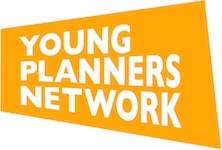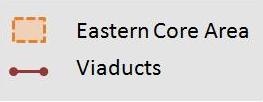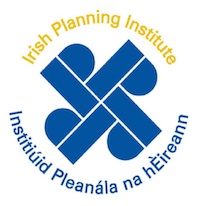Vancouver has a distinct international reputation as one of the most sustainable, liveable and greenest cities if not globally, well certainly in North America. This is a result of the redevelopment of the city along progressive urbanist lines which encourage higher densities and improved public transport. Another significant factor in the successful development of the city is the level of engagement Vancouver has created within its planning process. It has successfully generated a meaningful dialogue between planners, the public and private actors on key planning issues. It has allowed for both the inclusion of outside ideas but also community consensus on large scale urban intensification projects. It continues to push the boundaries in the public consultation process, adopting progressive methods to encourage participation. One of the most recent initiatives is the re:CONNECT open ideas competition, a public design competition for the redevelopment of a key area. The competition was an integral component of the larger public consultation program for this area known as the Eastern Core. The contest was a combination of public and private design submissions followed by the selection of winning entries through a jury panel and public online vote. The purpose of the competition was to stimulate creative dialogue in the redevelopment in one
of the central metropolitan areas. Significantly this competition illustrates the level and standard of public engagement and also the openness to outside ideas Vancouver continues to adopt in its urban redevelopment.
The Physical Context
Following the 2010 Olympics Vancouver continues to focus on large key projects to generate development. One of the city’s current priorities is the redevelopment of the Eastern Core Area. This area is centrally located between the downtown area and the wider city. It is defined primarily by rail infrastructure and vacant, low-intensity ex-industrial and warehouse uses, known as the False Creek Flats. It is also characterised by two large viaduct bridges, which serve as the main traffic arteries to the downtown area. The Dunsmuir and Georgia viaducts are physical and visual barriers between the adjacent residential suburbs and the downtown area. Much discussion from the academic and design community had already suggested proposals for this area and how it can be successfully developed. Acknowledging an existing design debate the City of Vancouver turned its attention to developing this well located, but vastly underused area.
The Process
Following initial transportation studies into the effects of removing part or all of the Viaducts, the City set about reconfiguring the remaining space. This next step involved civic engagement within the planning process to decide on the vision for the area. The city resolved to use a public design competition at the initial stages of the planning process. In doing so it was hoped that public proposals would be more inspired and not simply responding to design proposals set forward by the planning team. The purpose of the competition was twofold: to consult the public about the redevelopment of the area, and also to stimulate discussion within the design community for the area. Rather that directly commissioning a proposal the main function of the competition was to produce fresh, creative design ideas.
This type of initiative has been used successfully by the city previously. For example the Where’s the Square? contest in 2008 involved an open public design element. The 2008 design competition focused on the inclusivity of public actors in shaping the public realm. The greatest difference in the most recent contest was the scale. The re:CONNECT competition promoted the public and design community to contribute and decide on a masterplan vision for a key urban area. This inclusive agenda has been pushed by the current director of Planning, Brent Toderian who, according to his online blog, recognises that “like many North American cities, competitions are still a new skill set for us” but that’s something they’ve been working to change. This competition was a more visible and involved process where it was hoped the public and the professional design community would have a much stronger voice in the development of their city.
The Competition
The re:CONNECT competition attempted to engage the widest possible segment of the population. The first element of the competition involved a design submission stage where individuals from both private firms and the public submitted design solutions for this area. Submissions were expected to meet a number of overarching principals for the future of the area including; place, linkages, green economy etc.. The competition was divided into two entry streams; the fee stream directed at more skilled design professionals and the free element towards the public, which anyone could enter. To maintain a serious standard of work a minimum criteria for public submissions was created including presenting the proposals through graphic illustrations. Only the fee stream included a monetary award for winning entrants and created an incentive for the design community to partake in the competition. The second element of the competition involved deciding on the winning entries. The winning submissions were chosen through both an independent design jury of local and international professionals. Interestingly a separate public online vote was included where the public choice decided on their own winning entries with votes cast on an online website.
It was impressive to see the range and quality of creative solutions proposed by the design community ranging from urban design professionals, the academic community and artists. Over 104 submissions from more than a dozen countries were received. There was a strong international response from countries such as Poland, Turkey and even Ireland, as well as a wealth of local submissions from community groups, affected residents and the general public. Similarly, it was remarkable to witness level of response from the public over a planning and design issue, evident through the internet submission and the comments left on the online website. It was however worth noting that the online voting system for the public to decide on winning entries was somewhat limited in that it was difficult to read the visual data online. Undoubtedly though the competition generated tremendous public and media attention and included a greater variety of actors within the design process then would have been previously been imagined. Although the City of Vancouver recognises that was it a large additional step in the public consultation process they confirmed the potential to include design competitions in future redevelopment schemes at this scale and the benefits of doing so.
The Outcome
Although no decisions on the future of the viaducts or the area are being made through re:CONNECT competition, the ideas generated will undoubtedly help inform the planning for the Eastern Core Area. In particular, the ideas will shortly feed into the Downtown Transportation Plan and the Eastern Core Policy due to be reported in Summer 2012. Positively, the future planning strategy aims to include the best elements of all of the proposals. This initiative illustrates how Vancouver has encouraged a consistently open and dynamic commitment to engaging its public in decisions which shape the future outcomes of the city. It highlights an openness to new forms of civic engagement and commitment to allow for innovation and creative solutions within the planning processes through public design competitions. Although design competitions are not a new vehicle for generating ideas the scale of inclusively, openness and engagement in this project are highly commendable. In Ireland where the scope of public and private participation in the design process are only now taking tentative steps towards increased consultation and more inclusive governance there are significant lessons to be learnt. The importance of embracing equally the public and private sector for solutions to key planning issues and allowing a reflexive and supportive relationship are unquestionable.
Catherine Neill M.Plan graduated from University College Cork in 2011 and now works in Engineering Services in the City of Vancouver.




